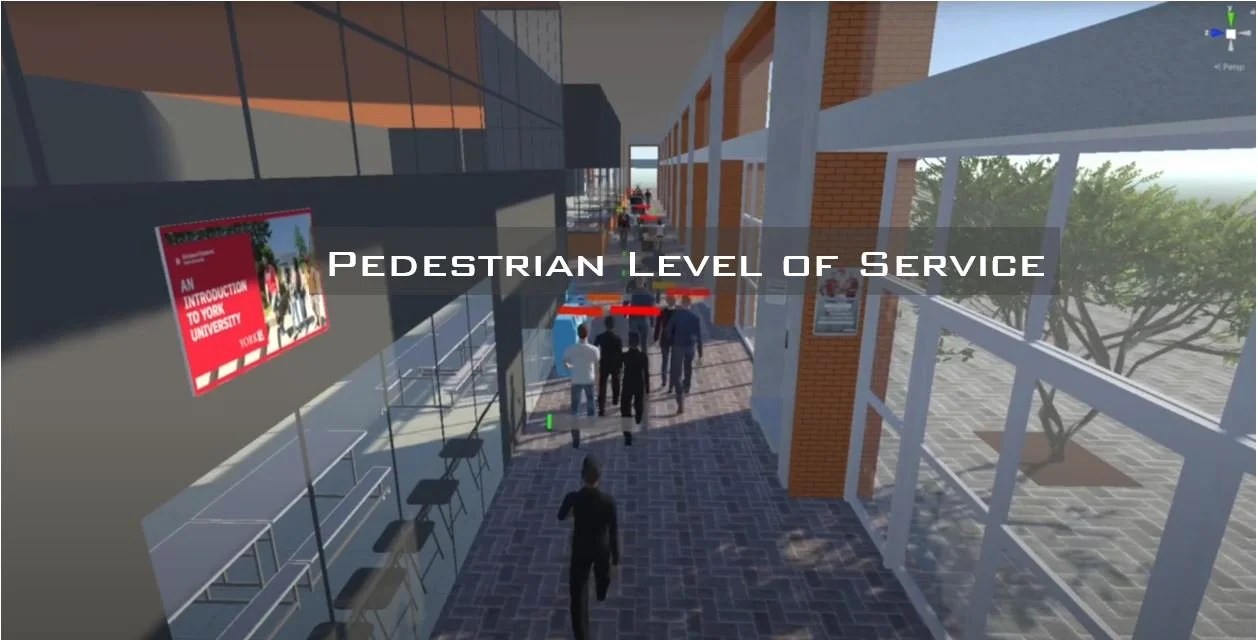
Active Transportation and Micro Mobility
Enhancing Pedestrian Level of Service
The problem lies in the current method for analyzing pedestrian facilities, which relies on density as a quantitative indicator to assess Pedestrian Level of Service (PLOS). Density fails to capture restricted movement, such as shoulder brushing or bumping into others, which are critical for understanding pedestrian navigation. Addressing restricted movement is essential for effective mobility interventions, such as removing obstacles or widening sidewalks. We developed an enhanced PLOS integrating density and restricted movement using an intelligent vision system in Unity. The system, tested at York Lane, York University, operates in three phases: detection, PLOS analysis, and countermeasure selection. Using Vissim for realistic pedestrian simulations, we evaluated four scenarios involving static and dynamic objects.

